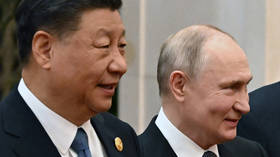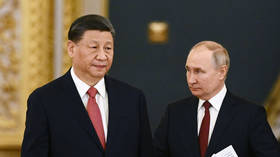Why Is China Pouring Money Into The Arctic?
from Government Slaves:

Diplomats gathered in Rovaniemi to discuss the state of the North Pole were caught off-guard by the United States’ posturing. In a speech to the Arctic Council, U.S. Secretary of State Mike Pompeo sharply warned against China’s increasing economic activity on the North Pole and the potential militarization of its projects. The Arctic Council is the main intergovernmental forum on Arctic affairs and its mandate does not cover security issues. Therefore, his remarks were unusual and raised important questions. To what degree could China’s polar aspirations pose a threat to the regional stability of the Arctic Circle?
Chinese investments in the Arctic
Some of China’s investments have been welcomed by regional actors, and include the China Iceland Joint Arctic Science Observatory. Its costs were covered fully by the Chinese government, according to Halldor Johannsson, vice-chair of the new research facility located in Northern Iceland. Originally meant to monitor the northern lights, both parties have already committed to expanding its activities. Despite earlier suspicions in 2011 regarding investments by a Chinese billionaire, Iceland’s attitude towards scientific cooperation with China remains neutral, and the Observatory was inaugurated in October 2018.
In Greenland, melting glaciers provide new opportunities for the exploration of natural resources. Chinese companies are involved in six different projects, including a partnership with the Australian company to extract uranium and rare earth minerals, which may serve a growing demand for the latter in China. While environmental concernshave been raised, international cooperation on natural resource extraction could reduce Greenland’s current reliance on Danish subsidies.
However, in other cases, Chinese investments have been met with wary eyes. A sparsely populated but vast island, Greenland relies on aviation for the transport of both goods and people. When in 2017 two Chinese construction companies applied for a government tender to build three airports, their bid to improve the infrastructure network of the island sparked fears of a Chinese takeover in the Danish Parliament. In order to prevent Greenland from falling into a potential ‘debt trap’, Denmark offered to finance the projects instead.
In Sweden, a newly opened research facility in Kiruna has also been put under scrutiny after the Swedish Defense Research Agency, an entity of Sweden’s Ministry of Defense, argued that its monitoring capabilities could be abused by the Chinese military. China’s first wholly-owned satellite ground station opened in January 2019 and is meant to improve global satellite data reception. Yet the highly blurred lines between the civilian and military sphere in China’s space efforts mean that potential military applications of its new satellite base cannot be ruled out. It is these concerns that fuel U.S. antagonism towards a growing Chinese presence on the North Pole.
Simply business?
These investments are exemplary of China’s wish to become a ‘polar great power’, a term first used by President Xi Jinping in 2014. Its aspirations in the polar regions have become clearer since January 2018, when the State Council Information Office released a white paper entitled ‘China’s Arctic Policy’. This document outlines some of China’s economic and scientific interests in the Arctic but refrains from mentioning any long term military and strategic goals.
Read More @ GovernmentSlaves.news
Loading...



